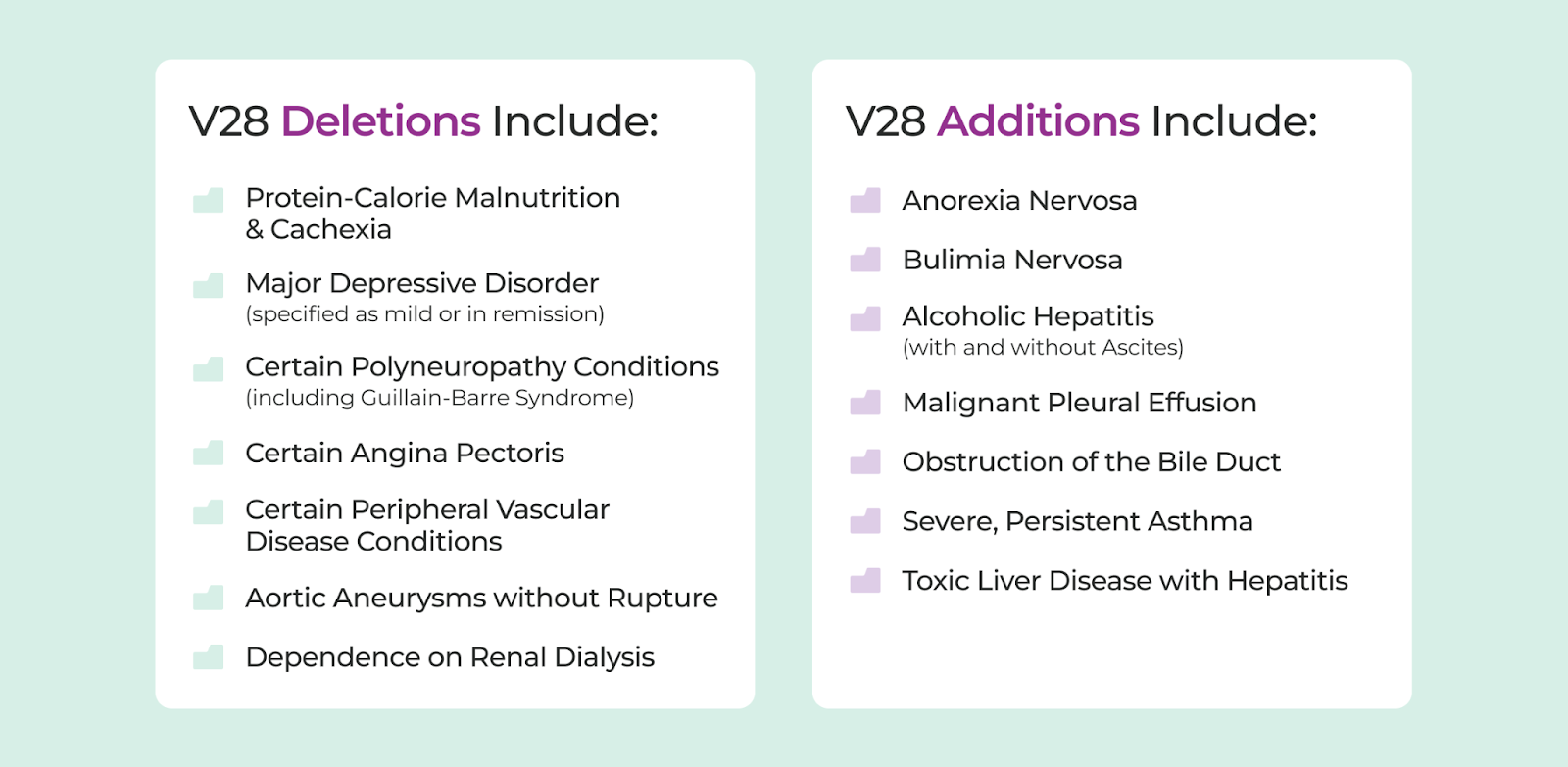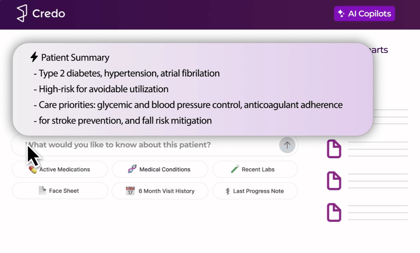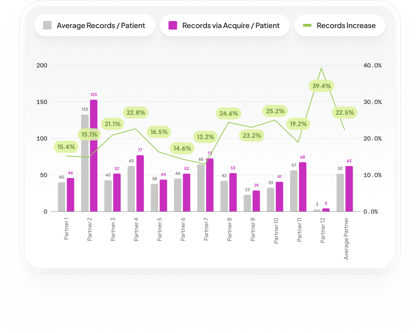How to Prepare for V28

Is your organization prepared to effectively risk adjust under CMS-HCC V28? If not, you’re certainly not alone.
In fact, in a survey of nearly 200 VBC professionals, we found that 51% were unsure how much their revenue would change under V28, and 77% reported struggling to engage with providers to appropriately code members.
Implementing a completely new model can feel like a daunting task, especially if your current efforts already seem insufficient. Our team at Credo is here to support you through the entire process, and to start, we wanted to share three steps you can start today to set your organization up for success in 2024 and beyond.
If you’re looking for a more in-depth guide to risk adjusting under V28.
1. Know What’s Changing Under V28
V28 of the CMS-HCC Risk Adjustment Models introduces several key modifications aimed at improving coding accuracy. These changes include:
- The removal of more than 2,000 ICD-10 codes from the current model
- The refinement of hierarchical condition categories to prioritize more severe or complex conditions
- Updates to the coefficients and weights assigned to specific HCCs

These changes have a direct impact on reimbursement rates and revenue optimization for Medicare providers.
Failing to adapt to the updated models and properly document all of a patient’s conditions can result in underpayment and financial losses for providers. Because a significant number of ICD-10 codes are being removed, it will be more important than ever for providers to identify every possible diagnosis, or else risk losing revenue.
By accurately capturing and documenting the health conditions of their patients, providers can maximize their risk scores and, consequently, their reimbursement rates.
2. Identify Gaps in Your Current Risk Adjustment Process
Risk adjustment challenges are nothing new in the value-based care space. In many ways, V28 is just shining a light on the shortcomings that already existed within traditional risk adjustment processes.
Risk adjustment that relies heavily on manual processes is inherently time consuming — and expensive — and can also be prone to errors, omissions, and inconsistencies. This can result in underpayment or missed opportunities for appropriate reimbursement, along with serious compliance issues.
Now that V28 is beginning to take effect, there’s no better time to audit your current processes and identify gaps that are leading to missed revenue or insufficient documentation.
3. Find New Opportunities to Digitize and Automate
With less reimbursable codes and new, unfamiliar coding regulations, it’s more important than ever to accurately identify and document every possible patient diagnosis.
Our AI-powered risk adjustment solution, Credo PreDx, offers significant support toward achieving this goal.
The system's ability to analyze vast amounts of data and provide real-time insights enables providers to improve the accuracy and efficiency of risk scoring. By leveraging advanced algorithms and predictive analytics, Credo PreDx can identify potential gaps in documentation and coding, leading to more precise risk assessment and appropriate reimbursement.
And in the process, Credo PreDx is able to both reduce the time providers spend on coding and increase coding accuracy.

If you’d like to dive deeper into the V28 model and strategies you can use to prepare your organization, we’ve developed a free, comprehensive guide that will walk you through all the most important, need-to-know information. Download your copy today at this link.
Back to blog

.png?width=420&height=297&name=Credo-25-Chart-ProductValidation-Inspect%20(1).png)


